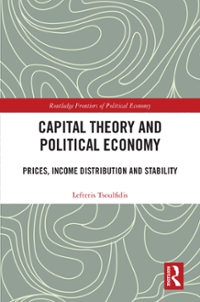Question
4. In August 2014, Tesla announced a new Infinite Mile Warranty. A Forbes article reported: Tesla announced that it would extend the warranty on the
4. In August 2014, Tesla announced a new "Infinite Mile Warranty". A Forbes article reported: "Tesla announced that it would extend the warranty on the drive unit of its Model S cars to match the battery pack's 8 years and unlimited miles with no limit on the number of owners. This will apply to the new Model S models and all ever produced." (Chuck Jones, Forbes, Aug 18, 2014)
(a) Suppose that before this warranty is in place, demand for Tesla's Model S car specifically is given by: P = 200 ? 2Q, where P is in thousands of dollars per car, and Q is in thousands of cars1. Suppose that prior to the new warranty, Tesla's marginal cost of production was constant at 32 thousand dollars per car. Based on these assumptions, prior to the offer of the new warranty, what is profit-maximizing price per car for Tesla? What quantity is sold? What is the consumer and producer surplus from the sale of the Model S?
(b) Offering this warranty costs Tesla money (since they now have to fix things that break). Specif- ically, Tesla estimates that it will cost them $1 thousand per ten thousand miles driven. Tesla's estimates show that the average customer of their Model S would drive 60 thousand miles in eight years. So all-in-all the expected cost to Tesla of the extended warranty is $6 thousand per car. Assuming that Tesla is risk neutral, what is Tesla's new marginal cost per car?
(c) Assume that all buyers of Teslas are risk averse. What will the introduction of this warranty do to the demand curve for this car? (You can't give me an exact equation, but you can tell me something about what happens to the demand curve.)
(d) Specifically, suppose that offering the eight-year, unlimited mileage warranty increases each po- tential customer's willingness to pay by 10 thousand dollars. With this, calculate the new profit-maximizing price that Tesla will charge for a Model S with the warranty. What are consumers and producer surplus now? Did they individually go up or down (from part (a))? Explain, intuitively, why.
(e) Recent articles suggest that Tesla's extended warranty may be costing the company more than anticipated. An article in October 2017 on Seeking Alpha noted that in particular, taxi and ride-sharing service drivers (who drive a lot more miles than the average driver) are buying the model S because of the unlimited mileage warranty.
Suppose that, due to larger-than-expected purchases by drivers who drive a lot of miles, Tesla revises its estimate of the mileage usually driven during the eight-year warranty period to 120 thousand miles (up from 60 thousand miles). Suppose that demand, the cost of the warranty per thousand miles, and all other costs stay the same as above.
Under the revised cost assumptions would Tesla's surplus increase or decrease or remain the same if they offered the warranty compared to if they didn't? You can answer qualitatively here (just say "increase" "decrease" or "remain the same"), but be sure to explain why. Is the nature of the problem described here that of adverse selection or moral hazard? Explain. 1In case it wasn't obvious, Tesla is the only company that produces the Model S and this demand curve is the demand curve for the Model S

Step by Step Solution
There are 3 Steps involved in it
Step: 1

Get Instant Access to Expert-Tailored Solutions
See step-by-step solutions with expert insights and AI powered tools for academic success
Step: 2

Step: 3

Ace Your Homework with AI
Get the answers you need in no time with our AI-driven, step-by-step assistance
Get Started


